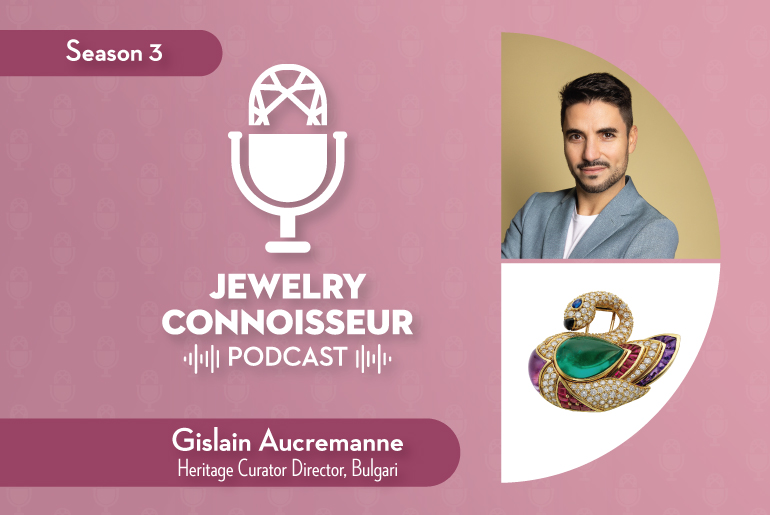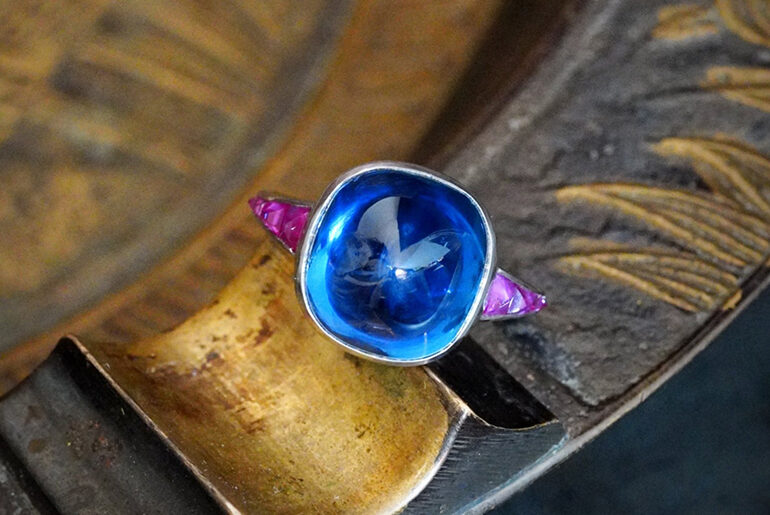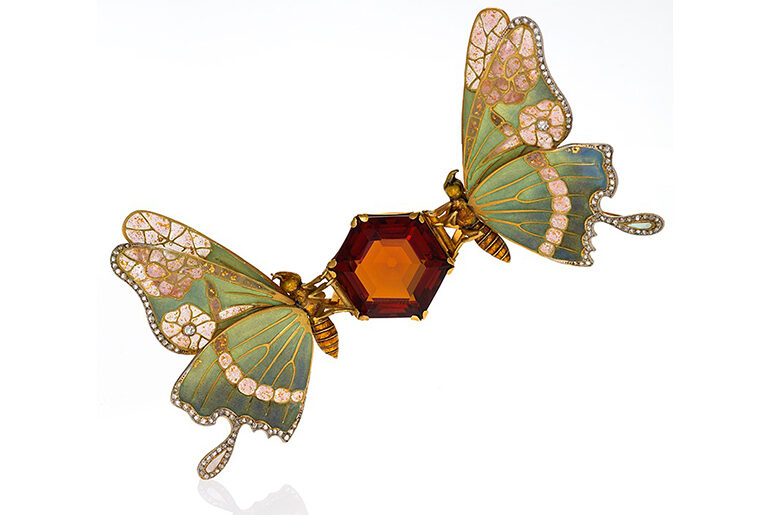Three young influencers share their opinions.

Lauren Brocious
Age: 22
Location: Virginia
Study level: BA in public relations from Virginia Commonwealth University. Hoping to commence a remote MA later this year in digital media strategy and advocacy at American University, Washington, DC.
Occupation: Digital content creator, mental health activist, and founder and president of mental health advocacy organization The #YouDefineYou Project.
What I think of diamonds: I was born in April, so diamond is my birthstone, and I used to receive them as gifts from my mom when I was growing up. When I got engaged in December, a diamond was my go-to choice. But this time, it was important for me to have a lab-grown gemstone as opposed to a mined one.
I had watched a documentary about mining facilities in Africa, and the dangerous conditions people are sometimes subjected to, including children. Before I got engaged, I remember talking to my fiancé, Jeremy, about how the fourth finger on your left hand is meant to symbolize the closest thing to your heart — that there’s an ancient belief the two are directly connected. I told him that I’d feel very selfish if the closest thing to my heart came from someone else’s hurt. That’s why we went for a man-made diamond.
Jeremy designed my engagement ring from scratch, and it’s a good representation of who I am. I had already shown him a lot of rings that I’d picked out on Pinterest; he knew I was looking for something timeless — the kind of piece that [Britain’s Duchess of Cambridge] Kate Middleton would like to wear on her finger. The diamond itself is a cushion-cut stone in a platinum halo setting, with lots of smaller stones graduating toward the center stone. The jeweler was Clean Origin.
I still appreciate mined diamonds, and I know plenty of people my age who feel the same. But I think jewelers specializing in mined diamonds could learn from those working with lab-grown gems. The main thing would be payment plans. We didn’t have one ourselves, but we have friends who got engaged at the same time as us, who specifically chose a man-made diamond because they could finance it in installments.
Our generation often has to think about paying off student loans at the same time as getting an apartment. If they’re buying an engagement ring as well, then having the option to spread those payments would help — regardless of whether the diamond is lab-grown or mined.
The other thing mined-diamond jewelers should consider is being more transparent when it comes to provenance. I wanted a lab-grown diamond for my engagement ring because I could be assured of its origin. But jewelers — especially smaller, standalone stores — aren’t always able to say where and how a mined diamond has been sourced.
People of my generation care about where things come from. If we buy a chicken from the store, we can look at the label to see where it was reared, make sure it’s had a cage-free life, and check for certification that it’s been treated humanely. It’s worrying that we can’t do the same for a mined diamond.

Ina Bhoopalam
Age: 19
Location: Nebraska
Study level: Starting an undergraduate program at Harvard University in August, provisionally majoring in economics.
Occupation: Social entrepreneur — founder and executive director of gender equality organization Dream Equal; cofounder and deputy executive director of climate crisis initiative One Up Action
What I think of diamonds: I come from a South Asian culture, where gold is passed down through generations, rather than diamonds, so they aren’t something that hold emotional value for me. But I do have opinions on the diamond industry — as do a lot of Gen Z — based on its labor practices and environmental impact.
We’ve read about the conditions faced by people working in unregulated, small-scale diamond mines in Africa, often earning less than a dollar a day. It is extremely frustrating to think they’re generating wealth for companies that don’t consider their safety or quality of life.
This extends to the communities around them, too. I recently read an article about how the sex trade thrives in many areas where diamond mines are located, which can lead to sexual assault and gender-based violence. The social impact is huge, and it affects people of color who have already been marginalized for hundreds of years.
Added to this is the environmental devastation. I’ve seen pictures from Sierra Leone where the landscape is littered with abandoned mines. I don’t think the whole industry follows these practices, but it’s difficult to see beyond the marketing spiel. So many diamonds are marketed as ethically sourced and environmentally friendly, but how do we know that’s true?
It’s important to my generation that there is transparency. If we don’t have transparency, we don’t have trust, and if we don’t have trust, we’re not going to buy your diamonds.
We aren’t looking for things to be perfect. We know that a diamond passes through several phases before it comes to us as a piece of jewelry. And we know it’s hard for companies to track what’s happened in each step of the production cycle. But as a generation that’s focused on social and environmental impact, we want to know as much as possible.
We want to know how and where these diamonds are sourced, and what companies are doing to improve working and environmental conditions. We want to see that diamond companies actively care — that they’re putting money back into communities and the environment, and not just talking about it.
If these companies and the jewelers that use their products want to appeal to Gen Z, then don’t just market to us using traditional, heteronormative images of a man proposing to a woman with a diamond ring. Instead, focus on what really matters to us — social and environmental impact — and include our voice in your marketing conversations. Speak with us rather than at us.

Sabria Sparrow
Age: 23
Location: California
Study level: BA in English language and literature from California State Polytechnic University, Pomona. Currently studying for an MA in English rhetoric and composition at the same university.
Occupation: Fashion, beauty and lifestyle blogger, and part-time writing tutor at a local community college.
What I think of diamonds: I don’t own any myself, and I’m not super materialistic, so they’re not necessarily something I would consider wearing at this point in my life. That’s not to say I wouldn’t be interested in diamonds in the future. But when I think of them right now, I either think of rappers and female influencers wearing flashy jewelry on social media, or — at the other end of the scale — of people getting engaged.
Personally, I’m not into the bling look, and I’m not really thinking about marriage. But what I do know is that diamonds are aspirational, and the traditional choice for an engagement. If I were to get engaged in the future, I would definitely look for a diamond ring — probably something vintage, elegant and dainty — and I’d look at social media for ideas. As someone who blogs about fashion and beauty, I use Instagram and Pinterest a lot. I tend to go to Instagram for inspiration, and use Pinterest to save images of the things I aspire to.
I have a lot of jewelry pins, and am naturally attracted to aesthetically pleasing images. That might either mean seeing jewelry in a minimalist setting — against a clean white background, where you can really get to see the detail — or it could mean seeing it against an everyday backdrop, like a sidewalk or backyard.
If I see an image of someone wearing a piece of jewelry alongside trendy clothing in an everyday setting, it shows how it might look appealing on me — how it might fit into my lifestyle. A lot of gold jewelry companies advertise in this way, using the social media I’m interested in.
I’m not really sure that diamond jewelers are doing the same thing yet. Like I say, I see the extremes of flashy jewelry or engagement rings. But if diamond jewelers changed their approach, showcasing more affordable items in a way that feels more real, they might engage better with people of my generation.
This article first appeared in Rapaport Magazine – June 2020.





2 Comments
Are these ridiculous people supposed to be representative of the next generation of diamond consumers? Such garbage
I agree, these types are picked because of the current situation the world is in. The supposed socially concerned person. They act so politically correct to look better themselves. Gross and transparently insincere.
I mention this because, no they do not represent true opinion of diamonds.